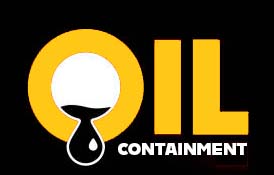When it comes to protecting the environment and preventing oil spills, creating effective containment barriers is crucial in the oil industry. Secondary containment is a method used to contain oil and other hazardous substances in the event of a spill or leak. One effective material that can be used for containment barriers is polyurea. This spray-on material forms a strong, flexible, and waterproof barrier that can help prevent oil from contaminating the surrounding environment. In this article, we will discuss how to properly create containment barriers in the oil industry using polyurea.
1. Plan and Design
Before creating a containment barrier, it is important to carefully plan and design the layout of the containment area. Consider factors such as the size of the containment area, the type of oil being stored, and the potential risks of a spill. Create a detailed blueprint that outlines the location of the containment barrier, as well as any drainage systems that may be necessary to collect spilled oil.
2. Prepare the Surface
The success of a containment barrier depends on the proper preparation of the surface it will be applied to. Make sure the surface is clean, dry, and free of any debris or contaminants that could interfere with the adhesion of the polyurea. If necessary, use a pressure washer to remove any dirt or grime before applying the polyurea.
3. Apply the Polyurea
Once the surface is properly prepared, it is time to apply the polyurea. Polyurea can be sprayed onto the surface using specialized equipment, creating a seamless and durable barrier that can withstand harsh conditions. Make sure to follow the manufacturer’s instructions for mixing and applying the polyurea to ensure a proper seal.
4. Inspect and Maintain
After the polyurea has been applied, it is important to regularly inspect and maintain the containment barrier to ensure its effectiveness. Look for any signs of damage or wear and tear, such as cracks or peeling. If any issues are found, repair them immediately to prevent oil from leaking out of the containment area.
5. Test the Containment Barrier
Before putting the containment barrier into service, it is a good idea to test its effectiveness. Pour a small amount of oil onto the surface and observe how the polyurea reacts. If the oil is contained and does not leak through the barrier, then it is ready for use. If there are any leaks or breaches, make the necessary repairs before storing oil in the containment area.
In conclusion, creating effective containment barriers in the oil industry is essential for preventing environmental damage from oil spills. By carefully planning, preparing the surface, applying polyurea, inspecting and maintaining the barrier, and testing its effectiveness, you can ensure that your containment barriers will effectively contain oil in the event of a spill. By following these steps, you can help protect the environment and ensure the safety of your oil storage facilities.
